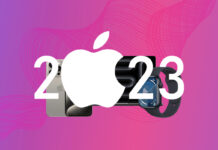 When the government starts knocking at your front door asking questions you take notice. You start to wonder, did you do something wrong, was it an accident? It’s no secret that anti-competitive pressure is increasing for Apple, and that talk about their practices are starting to become a topic for debate amongst politicians. The smart thing for Apple to do is to make sure that they’ve taken appropriate steps to alleviate that pressure, show the world that they’re not “evil.”
When the government starts knocking at your front door asking questions you take notice. You start to wonder, did you do something wrong, was it an accident? It’s no secret that anti-competitive pressure is increasing for Apple, and that talk about their practices are starting to become a topic for debate amongst politicians. The smart thing for Apple to do is to make sure that they’ve taken appropriate steps to alleviate that pressure, show the world that they’re not “evil.”
It started today as Apple took that first major step in showing the world that they’re not in the market of stifling competition or creating a walled garden; instead, they’re in the business of providing the best user experience possible. What did they do? Apple updated their App Store License Agreement and created a new Review Guideline, an attempt to appease some of the disgruntled App Store developers, and more importantly, show the world that they’re not as “closed” as some are making them out to be.
The License Agreement Changes
So what changes? The most notable change comes from Section 3.3.1 of the Developer Agreement. Apple took heat for specifically trying to eliminate Flash from their App Store, but today they made their stance a little clearer by removing the following from the Third-Party Developer Tools and Languages section of the agreement:
Applications must be originally written in Objective-C, C, C++, or JavaScript as executed by the iPhone OS WebKit engine, and only code written in C, C++, and Objective-C may compile and directly link against the Documented APIs (e.g., Applications that link to Documented APIs through an intermediary translation or compatibility layer or tool are prohibited).
What does this mean for developers? Code however you want, so long as you’re meeting their guidelines, Apple doesn’t care how applications are created. This is probably going to make a lot of Flash developers a little bit happier today. Developers can continue to use conversion tools provided by Adobe to get into the App Store.
It’s also notable for people who rely on third party rendering engines for games, in the same way that Epic has brought their 3D engine to the iPhone for an application like Epic Citadel. The previous jargon in the agreement made it uncertain whether these engines would be acceptable to Apple. As of now, companies are allowed to use 3D engines, but who knows how long that’s going to last—Cupertino is a little too fickle these days.
Other notable changes include section 3.3.9 of the agreement, titled Privacy and Analytics. Essentially, without getting all legalese on you, Ad Mob is no longer banned from the App Store.
The New Guidelines
The document, which sounds like it was written by someone other than a lawyer, highlights what kind of application will get approved and which will be denied. The “living document” could change over time as new hurdles come up in the App Store, but for the most part it’s a good starting point for developers.
At least there’s now a brief synopsis of what developers can and cannot do with their applications, but like any other guideline, there’s a level of human error that will continue to be a problem for Apple. There isn’t much Apple can do about it, considering ethical boundaries are different from one reviewer to another. Outside of opening the store up entirely, we’re not sure what Apple Inc could do other than rely on the existent appeals board that will review rejections from the App Store.
We’ll save you the pain of having to read the entire document; instead, we’ll list off some of the more “unusual” parts here:
- We have over 250,000 apps in the App Store. We don’t need any more Fart apps.
- If your app is rejected, we have a Review Board that you can appeal to. If you run to the press and trash us, it never helps.
For the record, we still want to hear your rejection stories.
Article Via Daring Fireball






